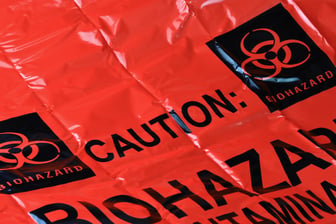As a small business owner, you have a lot on your plate, and managing hazardous waste just might be one of those obligations. You need to comply with legal safety standards while ensuring secure workplace protocol.
But what exactly does managing hazardous waste safely entail? And how can small businesses better ensure safety and compliance?
In this short guide, we outline federal compliance as well as the strict standards you’ll need to implement to achieve it. Manage hazardous waste safely with these tips.
Maintain Federal Compliance
First things first, you need to take care of your legal obligations, or you risk having your business shut down completely. There are two levels of compliance to consider: federal and local. We’ll explore the federal level more broadly here. For local compliance, consult the business regulations for your city and state. 
Generally, you can understand the regulations that apply to you based on how much waste you produce. The Environmental Protection Agency (EPA) defines hazardous waste generators in three categories, very small, small, and large quantity generators (VSQG, SQG, and LQGs). The category your business falls under depends on the amount of waste you produce in pounds.
As a small business, you qualify as a VSQG if you produce less than 220 pounds of hazardous waste per month. This means you’re exempt from hazardous waste regulations outside of a few basic requirements. These requirements include:
- Identifying all hazardous waste you create.
- Storing less than 2,200 pounds of waste onsite at any time.
- Delivering hazardous waste to properly licensed treatment locations.
Beyond that you’ll be subject to a different and stricter set of regulations for your handling, storage, and disposal of waste. For that, you’ll need a bigger guide.
Start ensuring compliance by totaling up your hazardous waste. You’ll likely need to convert volume to pounds in the process. As a comparison, a 55-gallon drum of water-level density waste typically weighs around 220 pounds.
However, you don’t have to count exempt materials in this total. Scrap metal, pharmaceuticals, and other types of waste often require different regulatory procedures that impact safety summaries, meaning they won’t affect your generator category.
Adopt Strict Standards
But compliance is just a starting point. You need to develop seamless business processes that mitigate accidents while maximizing employee safety. This means adopting strict waste management standards across your business.
Often, these standards are little more than good professional housekeeping paired with best practices. Employee training, for instance, is one of many methods for managing hazardous materials by reducing the likelihood of error through ignorance. From initial safety training to deep-seated business practices, the right safety standards can prevent any and all hazardous waste incidents.
These are a few tips for adopting stricter, safer standards when dealing with waste in your business:
- Organize your workplace safely. A consistent layout with eye-catching designs helps workers in any working environment manage materials safely. Reduce the likelihood of errors with effective organization of the waste identification and disposal process.
- Label all hazardous materials. Appropriate identifying markings on disposal containers help employees manage waste correctly.
- Keep food and drink away from hazards. Workers should never accidentally consume toxic material because it was near food. This policy must be strictly enforced to avoid liability issues.
- Wear and supply Personal Protective Equipment (PPE) appropriately. PPE is only effective if worn correctly and at the proper times. Workers should have the resources to do both when managing waste materials.
- Create a fool-proof error reporting system. Whether you achieve this through smart devices on the Internet of Things (IoT) or through whistle-blower incentives, a non-retaliatory reporting process for waste management missteps is necessary for safety.
Adopt these standards and strictly enforce them as you embrace safer waste management policies for your business. Fortunately, tools and techniques abound to help you streamline safety and reduce hazards in the first place, though these range in functionality. A waste oil burner, for instance, can help cut down on the 200 million gallons of waste oil that are improperly disposed of each year. However, these devices can come with their own risks.
For small businesses, safety will be a matter of compliance and strict standards. Implement best practices like quality organization and open employee reporting to keep your ventures secure. Use this guide as you learn what it takes to safely manage hazardous waste.
This post was written by a guest blogger, Noah Rue.
This article is intended for general educational and illustrative purposes only and should not be construed to communicate legal or professional advice. Further, this article is not an offer to sell insurance. Please consult with your licensed insurance agent for specific coverage details and your insurance eligibility. All policies are subject to the terms, conditions, limitations, definitions, and exclusions contained therein.




